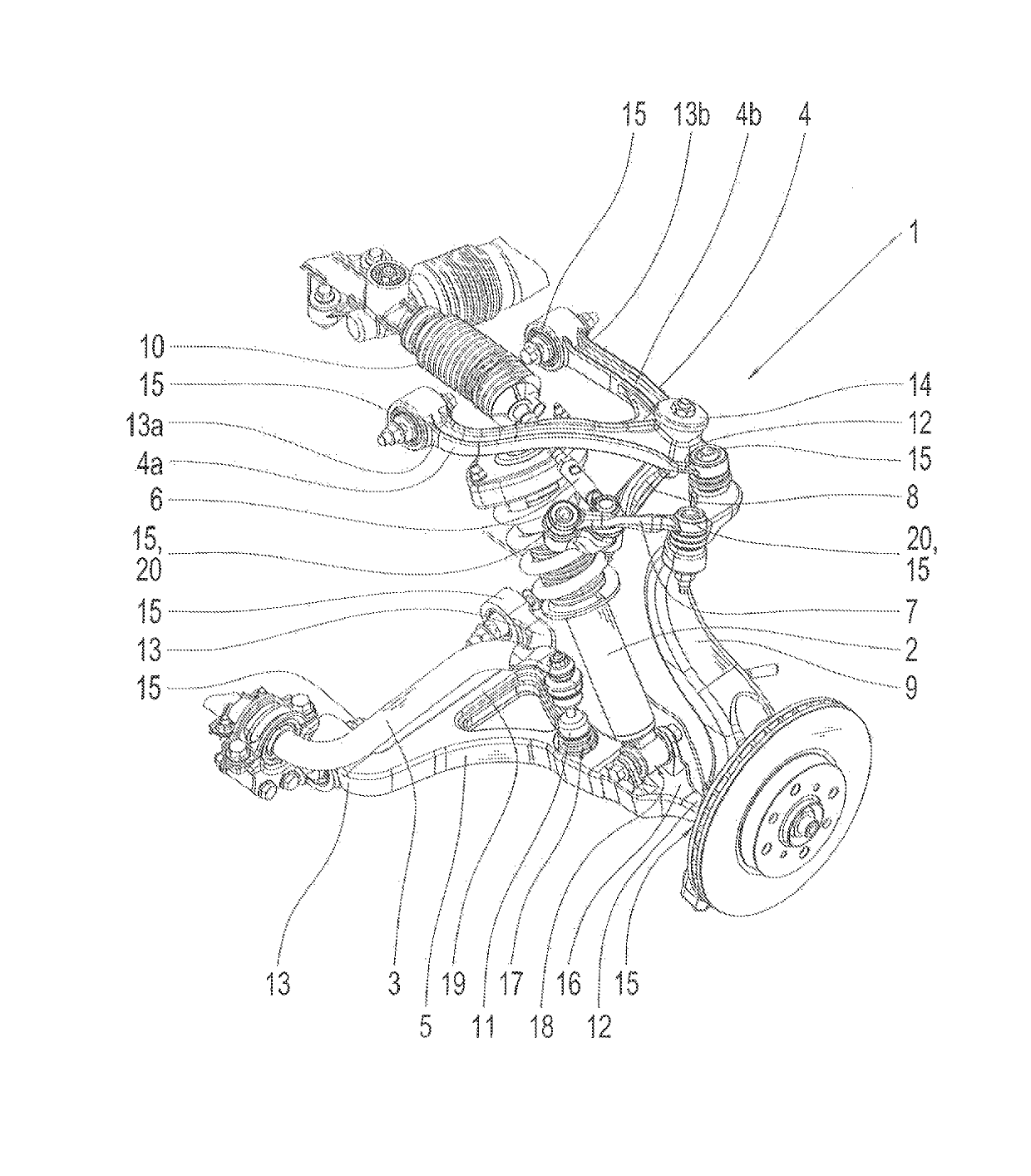Wheel suspension system
a technology of suspension system and wheel, which is applied in the direction of suspension arms with a strong grip, vehicle components, and suspensions that are resilient, can solve the problems of complex kinematics of chassis, and achieve the effect of small installation space requirements
- Summary
- Abstract
- Description
- Claims
- Application Information
AI Technical Summary
Benefits of technology
Problems solved by technology
Method used
Image
Examples
Embodiment Construction
[0036]The FIGURE shows a schematic representation of a wheel suspension assembly 1 according to one exemplary embodiment. The wheel suspension assembly 1 has the following components: a spring damper 2, a stabilizer bar 3, a first transverse link 4, a second transverse link 5, a first tie rod 6, a second tie rod 7, a reversing lever 8, a hub carrier 9 and steering gear 10 and a pendulum support 11. The wheel suspension assembly 1 is shown in the design configuration.
[0037]The first transverse link 4 is shaped as a triangular transverse link and is the upper transverse link. The first transverse link 4 has a first transverse link strut 4a and a second transverse link strut 4b. In addition, the first transverse link has a hub carrier end 12 and two ends 13a, 13b on the chassis side. The first transverse link strut 4a of the first transverse link 4 is delimited by the hub carrier end 12 and by one of the ends 13a on the chassis side. The second transverse link strut 4b of the first tra...
PUM
 Login to View More
Login to View More Abstract
Description
Claims
Application Information
 Login to View More
Login to View More - R&D
- Intellectual Property
- Life Sciences
- Materials
- Tech Scout
- Unparalleled Data Quality
- Higher Quality Content
- 60% Fewer Hallucinations
Browse by: Latest US Patents, China's latest patents, Technical Efficacy Thesaurus, Application Domain, Technology Topic, Popular Technical Reports.
© 2025 PatSnap. All rights reserved.Legal|Privacy policy|Modern Slavery Act Transparency Statement|Sitemap|About US| Contact US: help@patsnap.com

